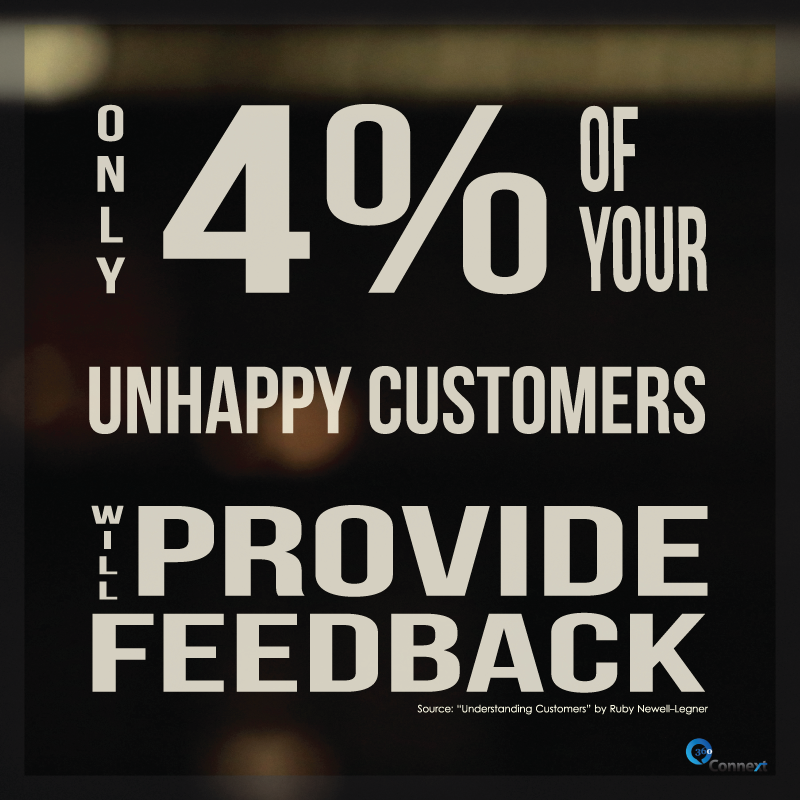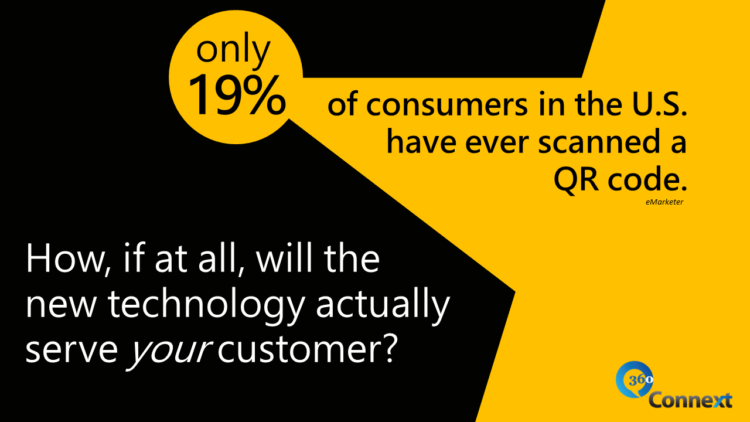
Customers can’t always tell us what they want, even when we ask them to leave feedback. So is there another way to learn what they will want next, before they take their business elsewhere?
Customer data, feedback and market research can still help guide your next innovation.
You just need to see the experience though a different lens, and be willing to roll up your sleeves to learn what your customers are looking for – even when they’re not asking for it. You may not have psychic powers, but customers are still sending you powerful signals about what your next innovation should be!
Humans are tricky because we often act on something before we really understand why we’re acting on it. We’re likely to say we are satisfied when we don’t know what we’re missing out on. (Yet!)
Just think about what happened to Border’s.
They relied on seeing customer satisfaction as the end of the journey. Eventually, those satisfied customers began behaving differently. They were visiting brick-and-mortar stores less frequently and relying more on e-readers long before Border’s was ready to offer one of their own. They took the stance of thinking their customers would continue to behave as they always had, instead of understanding their customers were very much a part of the world that was changing around them.
Behavioral data is just as critical as customer feedback. Look closely for subtle patterns that indicate something is changing – even if your customers haven’t found ways to tell you.

The patterns, keywords or even just general information found in verbatim responses can give you the edge you need to prevent serious issues in the future. This can be as simple as asking questions like “has this happened to anyone else” when you spot an issue reported only once or a handful of times.
Many customers won’t tell you when there’s a problem, so seeing those who speak up as representatives of the larger population will help you avoid more serious issues in the future.
The bigger issues that cause PR disasters and sometimes business failures can be invisible if you’re not looking for them. They start with just one complaint. Then there’s another. Suddenly, there are hundreds. If the first complaint is taken seriously and seen as a possible representation of others, those PR nightmares might be avoided.
Couched in those complaints are often requests for what they are seeking. A complaint about hours of operation, for example, can tell you your customers are seeking improvements in 24-hour support or customer service. Would better online and mobile options remove that complaint? Asking these types can turn those near-defectors into loyal customers.
“If I had asked people what they wanted, they would have said faster horses.” -Henry Ford
I’ve seen a lot of amazing trends become reality after several years of attending the South by Southwest Interactive Festival. One year, the exhibit hall was dominated by QR codes. Brands couldn’t wait to put those funny looking bar code squares on everything from mouse pads to t-shirts.
The problem, of course, was the way they were used. QR codes are silly if they scan to nothing a regular web site and offer little or no reward. QR codes on t-shirts were even sillier because as humans wore them, they moved as humans do, making the code impossible to scan and awkward to boot!

Is your new tech really helpful, or is it annoying? Intrusive? Creepy?? View the full Slideshare and find out!
Sometimes innovation is driven by “what’s next” instead of “what’s actually good for customers.”
This year, Virtual Reality (VR) was the most hyped tech at SXSW. This technology is admittedly “cool” and exciting, and it does have a chance to be useful in certain situations. But it doesn’t do every business good to play in this sandbox.
Customers can certainly help you understand how they would use these new technologies, but don’t let them convince you to jump on the next big thing if it doesn’t serve them or your organization. Trends do come and go, so be sure you are listening for what customers want instead of what they think is cool.
It’s difficult not to get caught up in innovating for what’s cool, but it’s important to look at the real data – and your customers’ real lives – to really understand and deliver what your customers actually want.
This post was written for, and a version originally appeared on the Clicktools blog.
 Jeannie is an award-winning customer experience expert, international keynote speaker, and sought-after business coach who is trailblazing the movement from “Reactive Customer Service” to “Proactive Customer and Employee Experience.” More than 500,000 people have learned from her CX courses on LinkedIn Learning, and her insights have been featured in Forbes, The Chicago Tribune, The Wall Street Journal and NPR.
Get Jeannie’s insights in your inbox each week by subscribing to The Weekly Win and follow her on LinkedIn, Instagram and YouTube.
Jeannie is an award-winning customer experience expert, international keynote speaker, and sought-after business coach who is trailblazing the movement from “Reactive Customer Service” to “Proactive Customer and Employee Experience.” More than 500,000 people have learned from her CX courses on LinkedIn Learning, and her insights have been featured in Forbes, The Chicago Tribune, The Wall Street Journal and NPR.
Get Jeannie’s insights in your inbox each week by subscribing to The Weekly Win and follow her on LinkedIn, Instagram and YouTube.